
Nathaniel Levy is a student at Harvard Law School and a member of the Labor and Employment Lab.
The Supreme Court’s First Amendment decision in Garcetti (2006), which concerned the speech of public employees, has since been applied in several cases concerning public school teachers. Although some have been correctly decided, the reasoning lower courts have adopted dangerously suggests that virtually all teacher speech in schools and to students—whether made in the classroom, as part of lessons, or otherwise—lacks First Amendment protection.
The Garcetti decision diminished public employees’ speech rights.
Garcetti v. Ceballos (2006) arose from a suit brought by Ceballos, a former prosecutor, against the district attorney. Ceballos claimed that he was fired for informing his superiors of unlawful police conduct, and that the retaliatory firing violated his First Amendment rights. The Supreme Court applied Pickering v. Board of Education (1968) and Connick v. Myers (1983). Under them, a court analyzing the constitutionality of a public employee’s speech first asks whether the employee spoke “as a citizen upon matters of public concern.” If yes, then the court proceeds to balance the employee’s free speech interest against the government employer’s interest in efficiency and stability. The Garcetti Court made it more difficult to proceed past the first question.
The Court held that when public employees speak “pursuant to their official duties,” they don’t speak “as citizens for First Amendment purposes,” and thus lack constitutional protection. Writing for the majority, Justice Kennedy found Ceballos’s speech fell within his “official duties.” But Kennedy didn’t rely on a formal job description, and advised future courts not too, either. Motivating Kennedy’s reasoning, at least in part, was a line-drawing concern. Because “citizens do much of their talking inside their respective workplaces,” distinguishing official work-related speech from citizen-speech is difficult. In sum, the decision—the holding and its application to the facts—plainly pointed to less constitutional protection for public employees’ speech.
But Garcetti also appeared to leave the lower courts with room for interpretation. The opinion didn’t prescribe a test for determining official job duties. It merely provided that the inquiry should be “practical.” Nonetheless, courts have hewed closely to Kennedy’s example of broadly construing official duties when engaging in this “practical” inquiry in cases concerning teachers.
When Garcetti is applied to public education, the teachers generally lose.
The broader a teacher’s official duties, the less likely it is that she speaks as a citizen for First Amendment purposes while at work. But the kinds of teacher speech at issue in these cases varies significantly. To better evaluate Garcetti’s application to, and effects on, public school educators, it’s helpful to organize the cases by their facts—specifically, the kind of speech that got the teachers fired or censured.
(1) Easy cases: teacher speech directly related to classroom instruction.
In a 2010 decision penned by Judge Sutton, the Sixth Circuit ruled, unsurprisingly, that a teacher’s official duties included assigning reading. The (non-tenured) teacher claimed she was fired for teaching books that some parents and the administration didn’t approve of (including Heather Has Two Mommies and Siddhartha). Sutton reasoned that keeping the First Amendment out of classroom instruction promotes the democratic accountability of school systems. Holding otherwise would “transform … curricular disputes into constitutional stalemates.”
Similarly, a 2017 Second Circuit case concerned a New York City English teacher’s claim that she was fired for teaching about race and law enforcement in ways that unsettled her principals. Lee-Walker, the teacher (also non-tenured), was informally observed by her assistant principal during a lesson for ninth-graders about the Central Park Five and societal rush to judgment against Black men. The assistant principal instructed Lee-Walker to present a more balanced viewpoint, and told her that her lesson would rile up Black boys in the class. Over the following months, the administrators told others in the school that Lee-Walker had an attitude problem, and Lee-Walker’s evaluations—which had up until then been satisfactory—got worse. Within a year she was fired. The district court held that Lee-Walker’s claim failed under Garcetti; the Second Circuit ruled that the defendants had qualified immunity, and thus didn’t reach the First Amendment question.
As sympathetic as these plaintiffs are , the cases are easily decided under Garcetti. Assigning books and teaching lessons are well within a high school teacher’s official duties. Judge Sutton’s rationale makes sense; permitting teachersto override standards without limit could bring public education to a grinding halt.
(2) Harder cases? Teacher speech indirectly (or un-)related to classroom instruction.
In a 2007 Judge Easterbrook opinion, the Seventh Circuit ruled against a first-year (and non-tenured) elementary-school teacher who’d been fired for remarks made during classroom discussion of current events. A student asked her if she participated in political demonstrations; she responded that once, when when passing a protest against the Iraq War, she honked at a sign stating “Honk for peace.” Easterbook reasoned that the case was easier than Garcetti. The teacher’s statement fell within her official duties because “[e]xpression is a teacher’s stock in trade, the commodity she sells to her employer in exchange for a salary.” This reasoning serves the constitutional principle of promoting democratic accountability, as Judge Sutton explained above.
Others have adopted and followed Easterbrook’s reasoning. For example, in a 2011 Ninth Circuit decision against a high-school calculus teacher, the court ruled that the teacher spoke as a teacher, not a citizen, when hanging posters with patriotic and religious messages in his classroom. “[T]eachers necessarily act as teachers . . . when at school or a school function, in the general presence of students, in a capacity one might reasonably view as official.”
Despite what Judge Easterbrook said about the case being easy, both of these cases are “harder” than those in the previous section because the nature of the speech at issue and the parameters of official job duties are blurrier. Harder, and wrongly reasoned. Mayer constructed an idea of teacher’s official duties too capaciously. It’s true that teachers’ responsibilities aren’t confined to leading classroom lessons. They routinely work 10-plus-hour days, managing behavioral conflicts and school logistics throughout the day, and communicating with parents long into the evening. But school districts ought not to have a constitutional interest that permits regulating all teacher speech without limit. (Remember, if the speech is made pursuant to official duties, courts aren’t supposed to do typical First Amendment balancing.) In effect, Garcetti’s application is conflating an official duties analysis with a forum-based analysis—i.e., if the speech takes place in the school, or is made to students, it’s pursuant to official duties. Here, the calculus teacher’s overt messaging could well undermine a district’s policies about formal or informal discussion of religion or patriotism in schools. By contrast, the elementary school teacher’s personal anecdote was more subtle, and wasn’t plastered to the classroom walls. It thus deserved protection.
As a matter of education policy, however, many of these cases illustrate how insecure non-tenured teachers’ jobs are, especially when they push the limits of convention in their schools and act without support form their principals. That insecurity undermines progressive teaching. Since the First Amendment doesn’t protect teachers in these situations, all the more reasons that unions should.
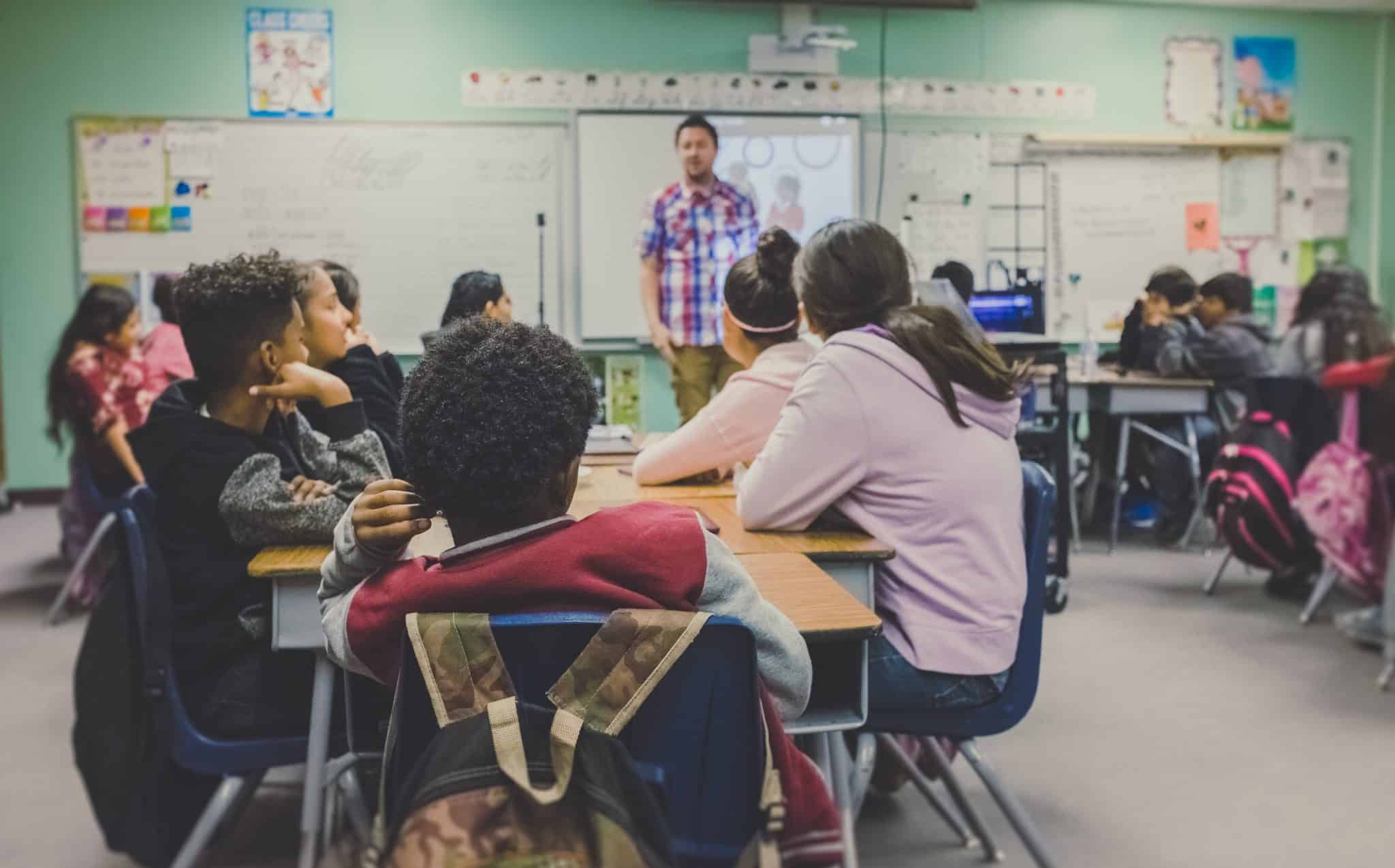
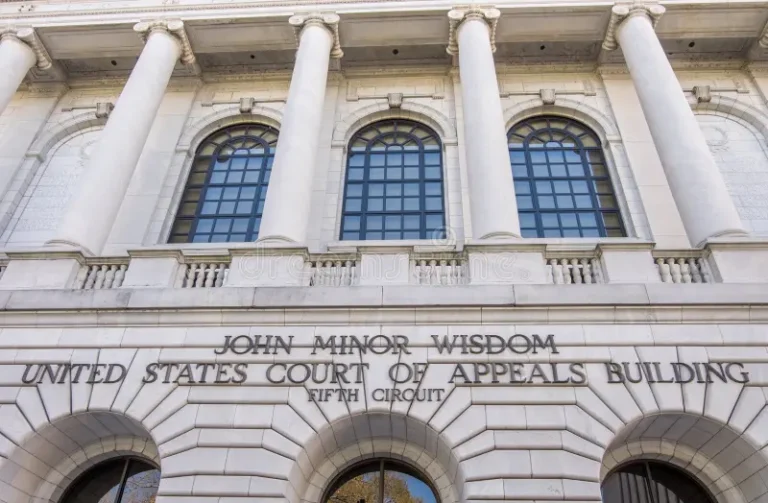
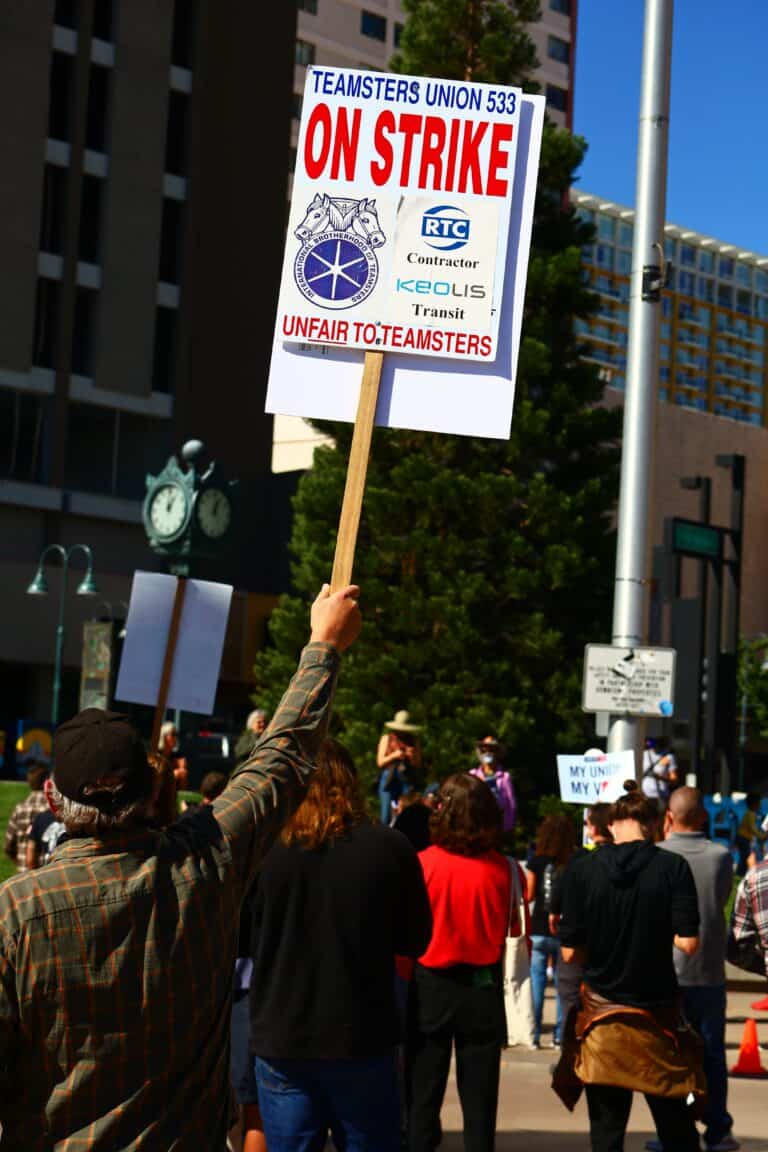

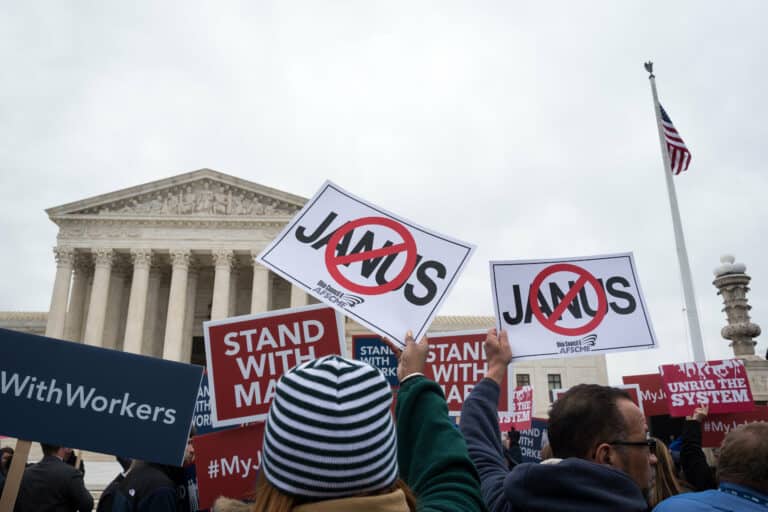
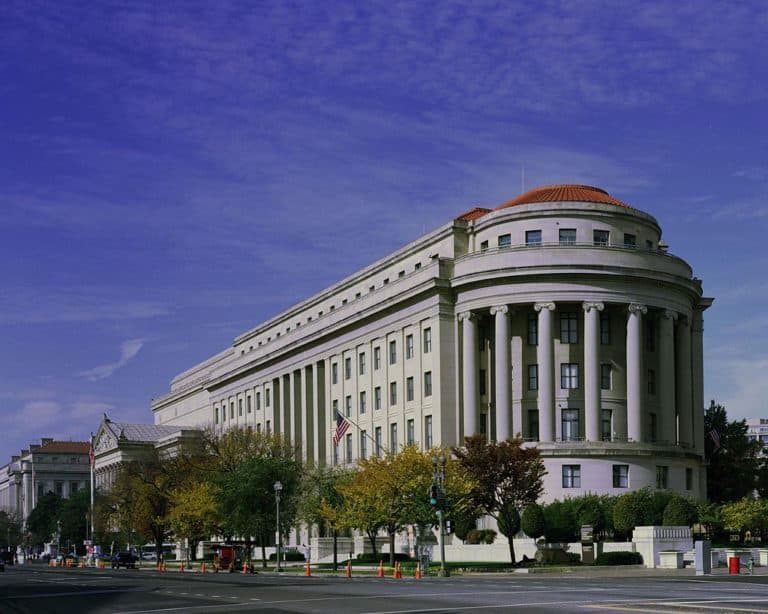



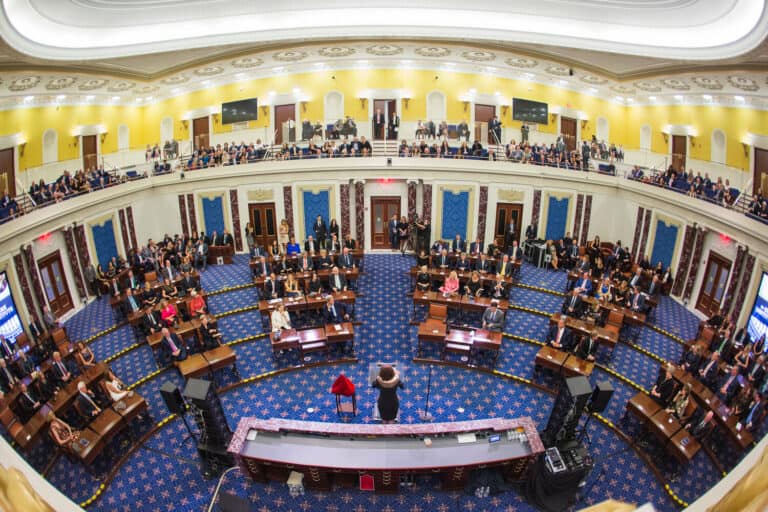
Daily News & Commentary
Start your day with our roundup of the latest labor developments. See all
November 17
Justices receive petition to resolve FLSA circuit split, vaccine religious discrimination plaintiffs lose ground, and NJ sues Amazon over misclassification.
November 16
Boeing workers in St. Louis end a 102-day strike, unionized Starbucks baristas launch a new strike, and Illinois seeks to expand protections for immigrant workers
November 14
DOT rule involving immigrant truck drivers temporarily stayed; Unions challenge Loyalty Question; Casino dealers lose request for TRO to continue picketing
November 13
Condé Nast accused of union busting; Supreme Court declines to hear Freedom Foundation’s suit challenging union membership cancellation policies; and AFT-120 proposes a “Safe Sleep Lots” program for families facing homelessness.
November 12
Starbucks and the NLRB face off over a dress code dispute, and mental healthcare workers face a reckoning with AI.
November 11
A proposed federal labor law overhaul, SCOTUS declines to undo a $22 million FLSA verdict, and a railroad worker’s ADA claim goes to jury trial.